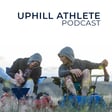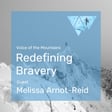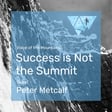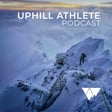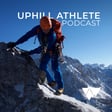
Training for Mountaineering: Foundations
Episode 2 of the Winter 22-23 Season
This is the first in a multi-part series where we are kicking off a major seeason of educational material on the podcast. Our goal is to discuss the steps of training for a mountaineering objective and give you actionable items to take with you on your training. In this first episode, we will focus on Aerobic Training Fundamentals and how you can set yourself up for success from the first step.
Plus we have a big introduction to make today, Chantelle Robitaille is our new director of coach training and athlete success. Chantelle is a coach, an ultra-runner, holds an advanced degree in High Altitude Physiology, and is coming to Uphill Athlete from this same position at CTS, Carmichael Training Systems, the world's largest endurance-coaching company.
Listen in, learn, and get to know Chantelle as she, Coach Alyssa Clark, and Steve House unpack the fundamentals of training for mountaineering.
Please rate, review and subscribe to our podcast on all podcast platforms. If you'd like more information on coaching, one of our training plans, our training groups or to connect, please visit www.uphillathlete.com, @uphill_athlete on instagram or email us at coach@uphillathlete.com








